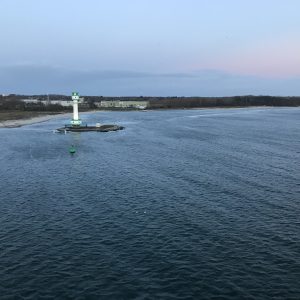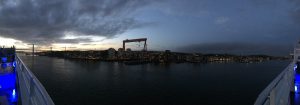
More wave watching, this time in Kiel
Beautiful morning arriving back in Kiel… Looking downwind, the weather might seem pleasant (especially when focussing on the sunrise). But looking upwind however, the wind rows on the water as…

